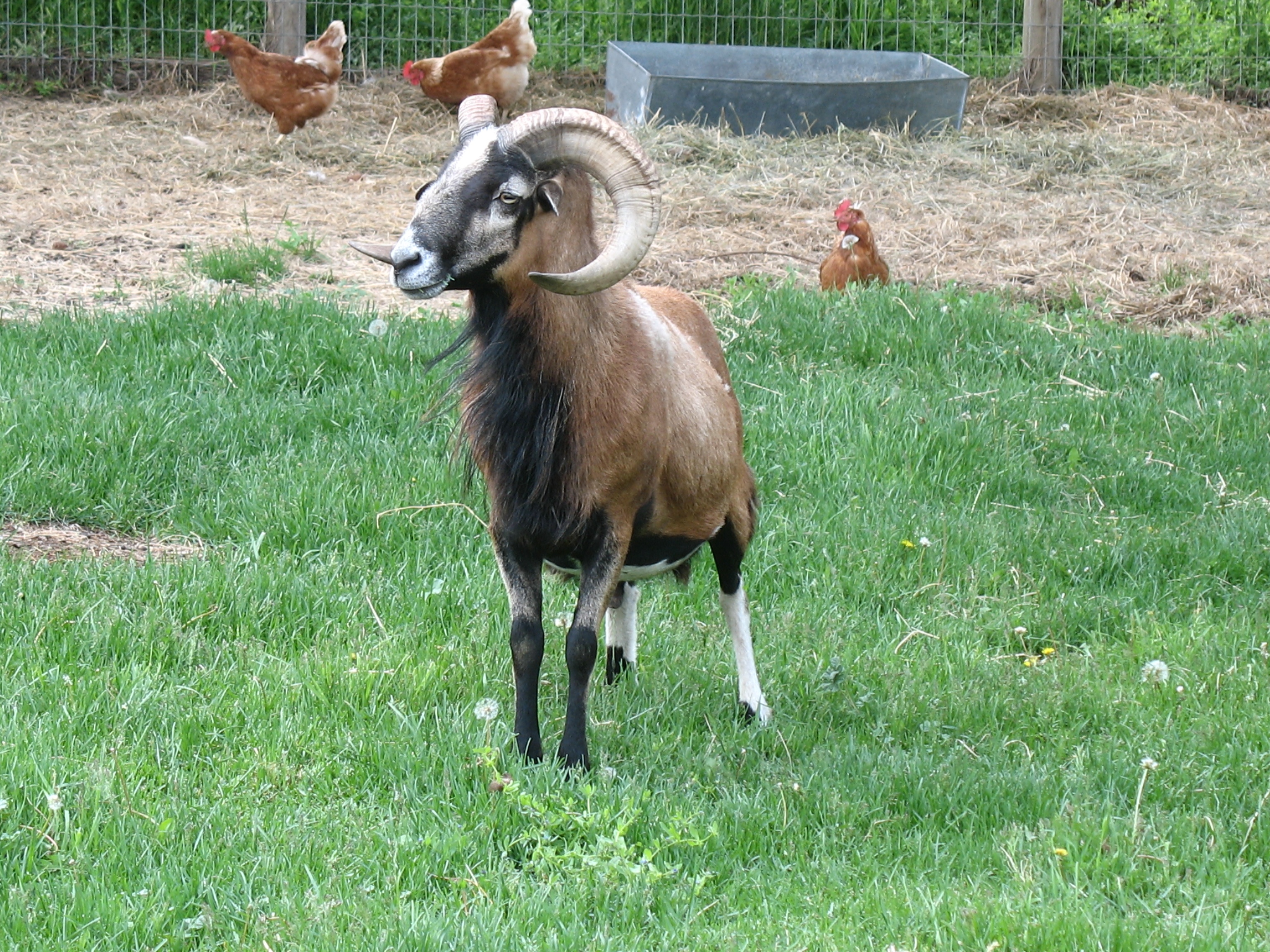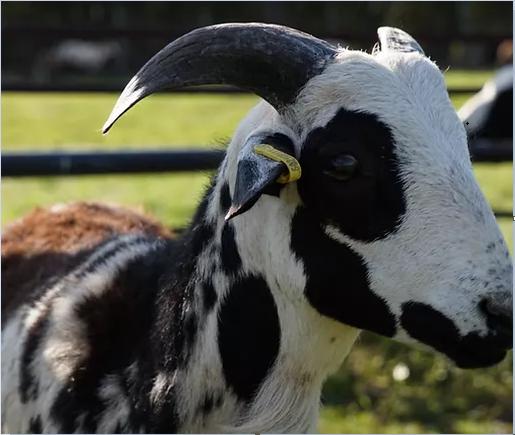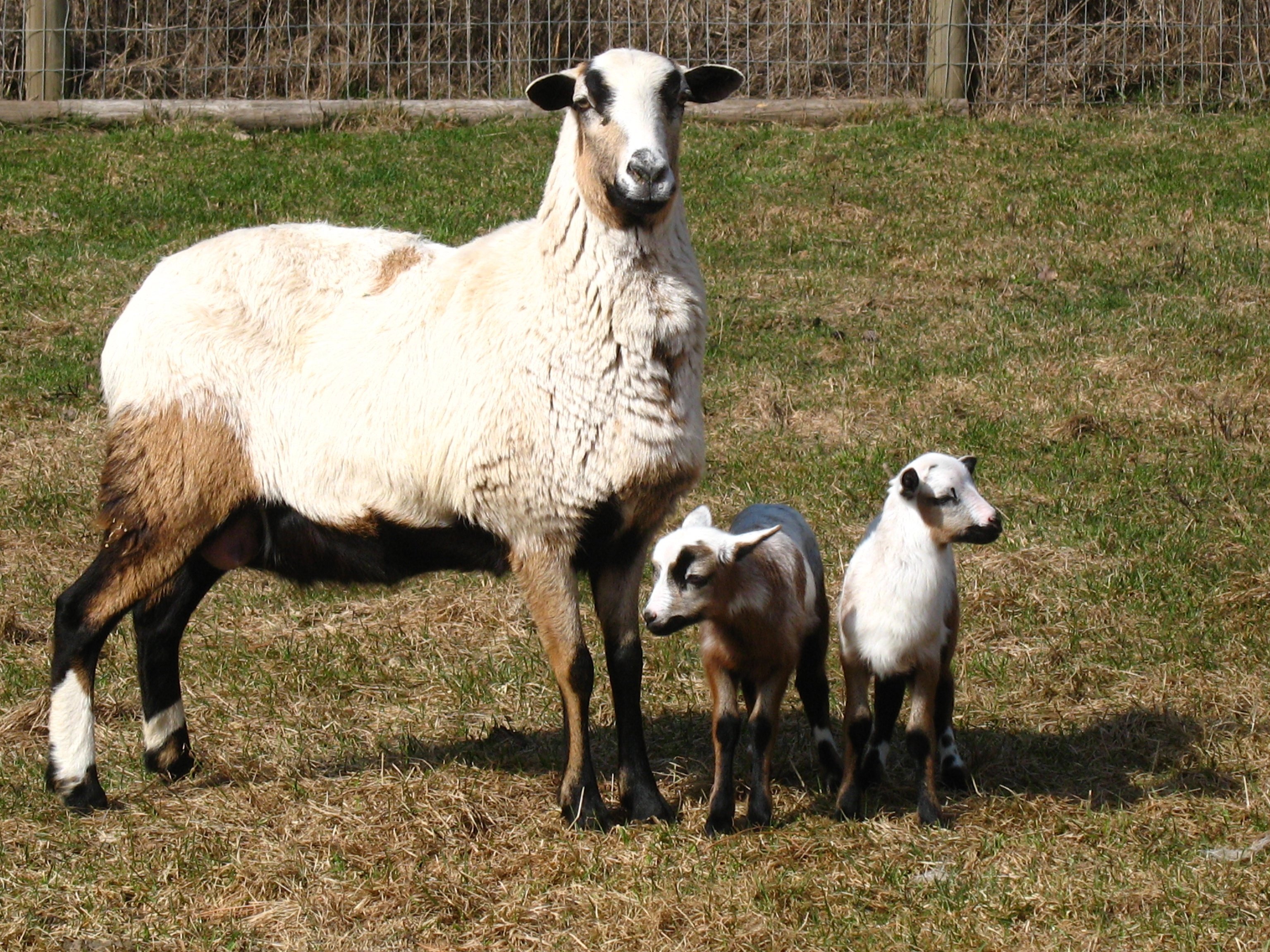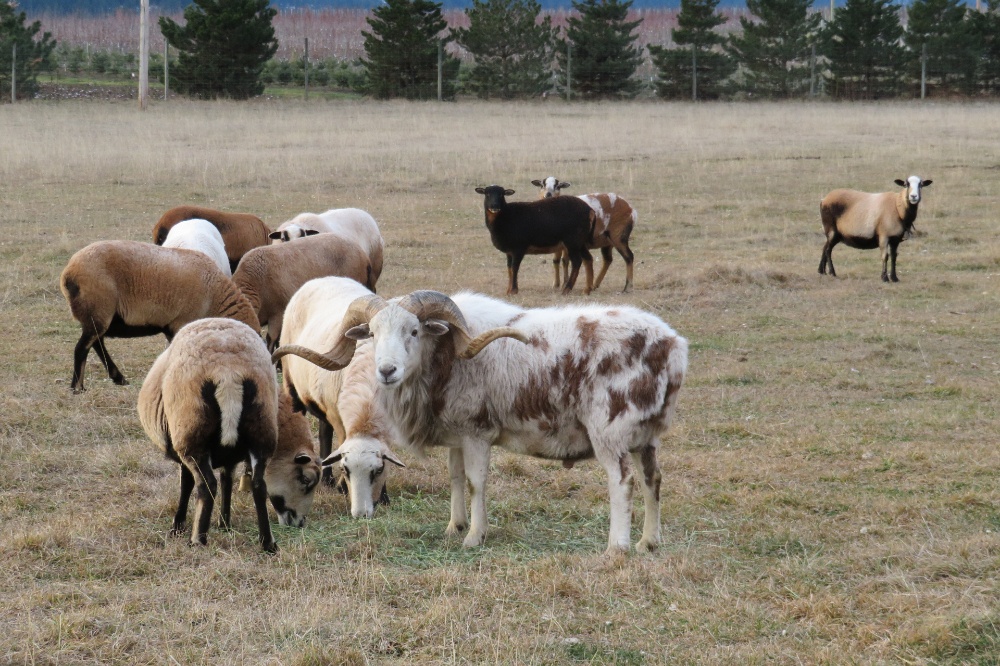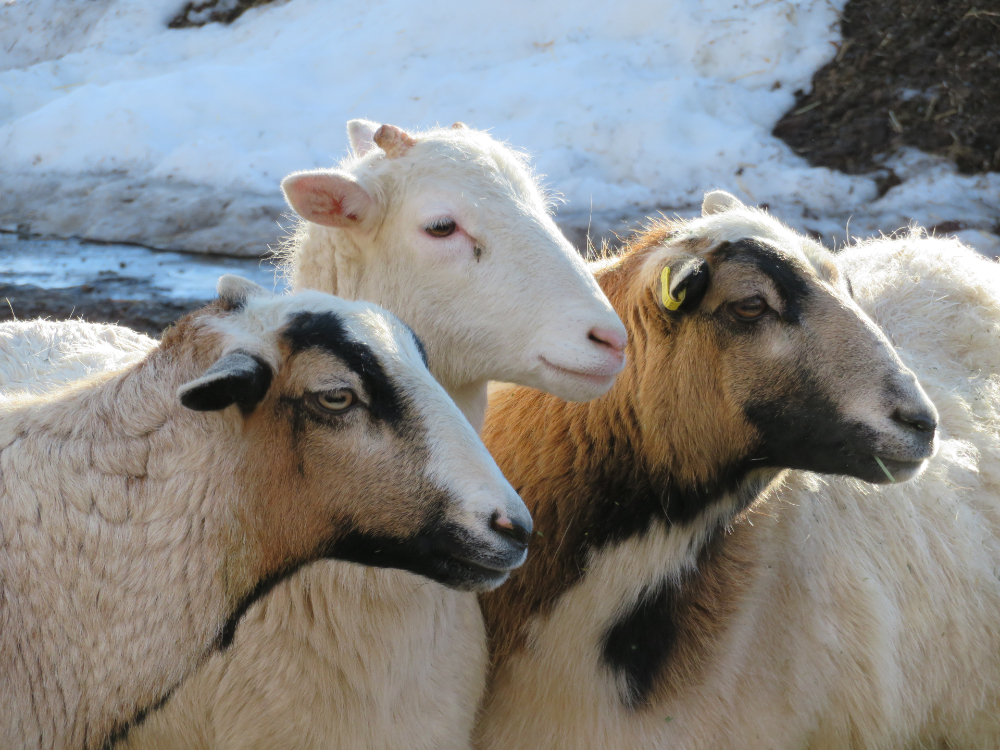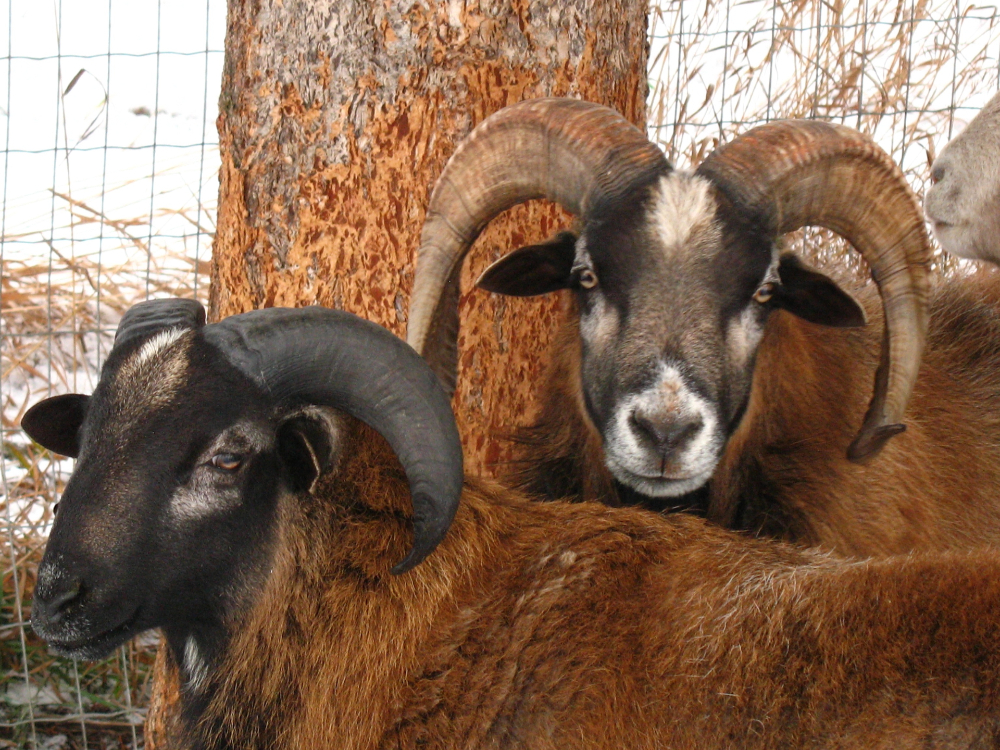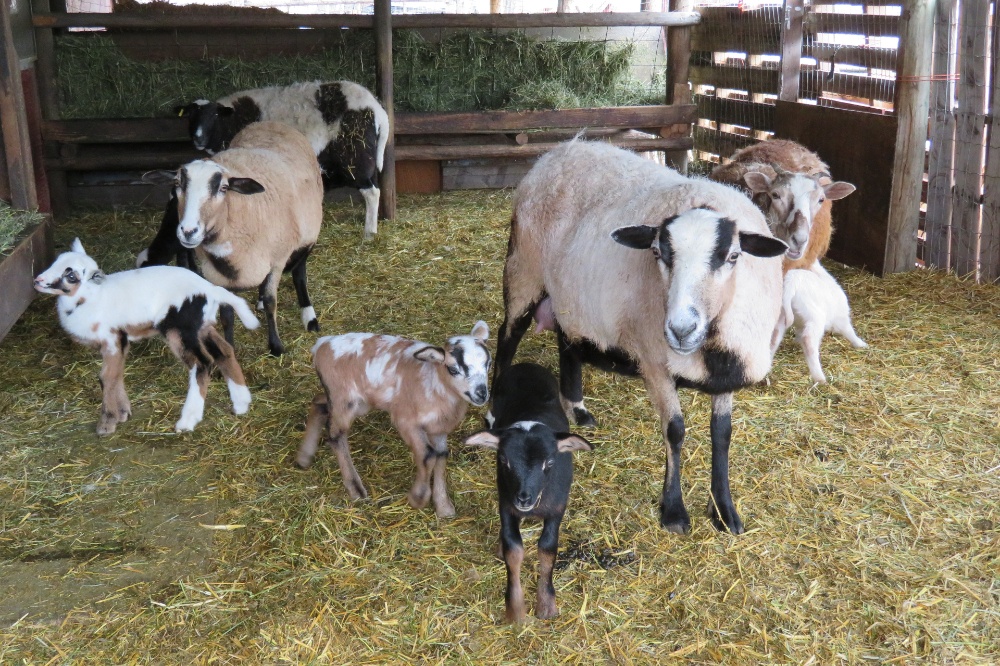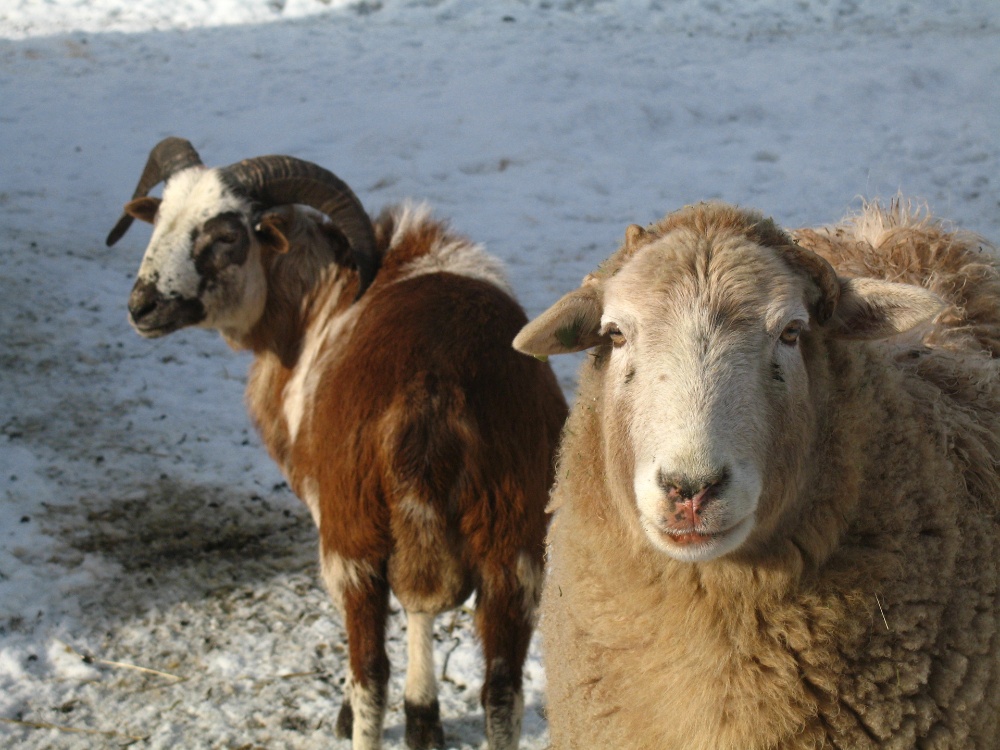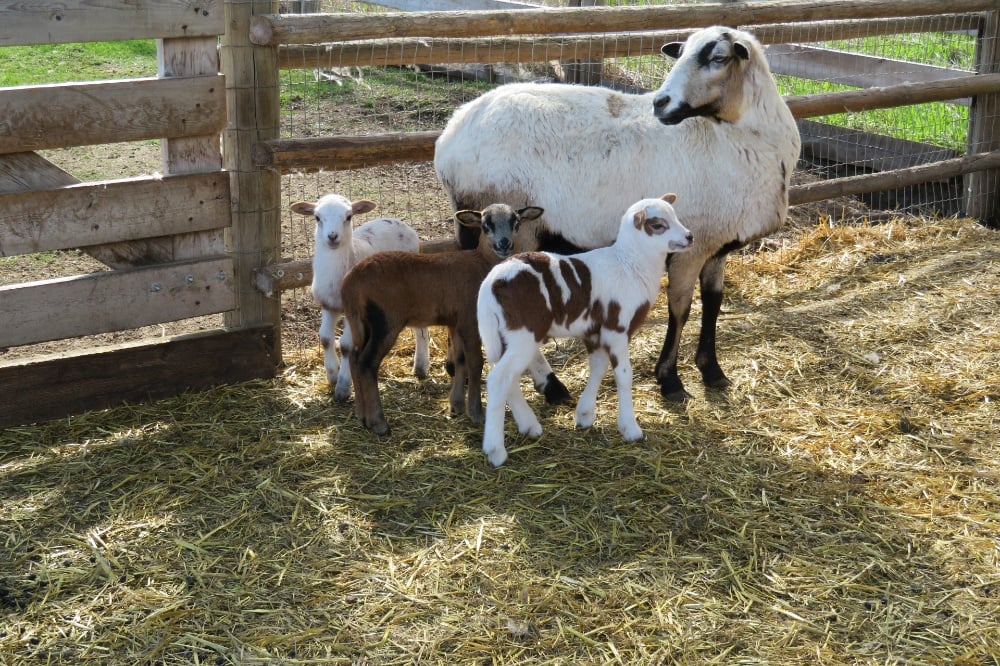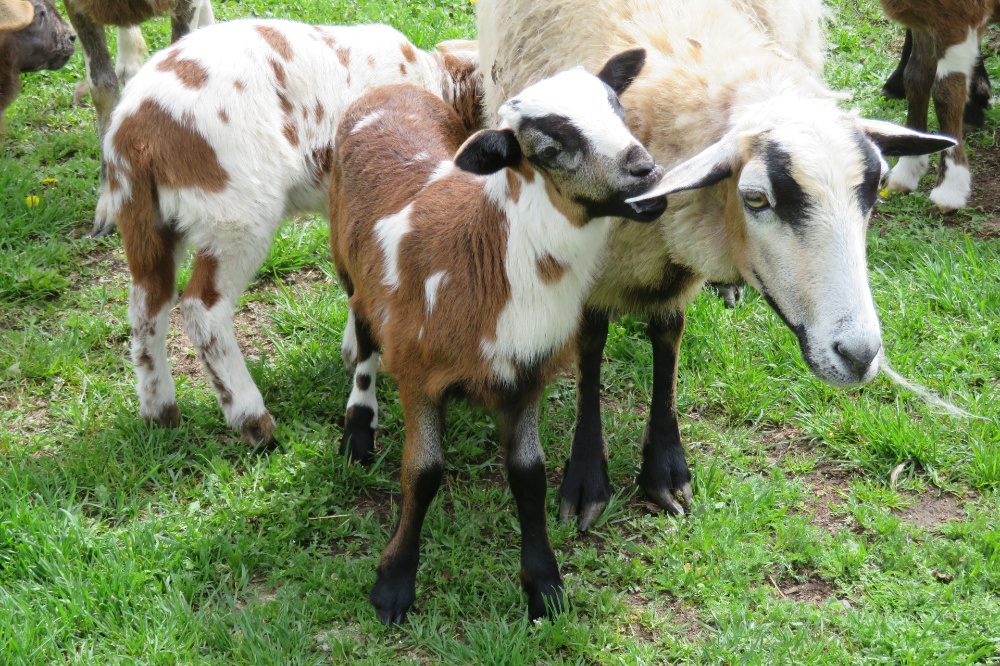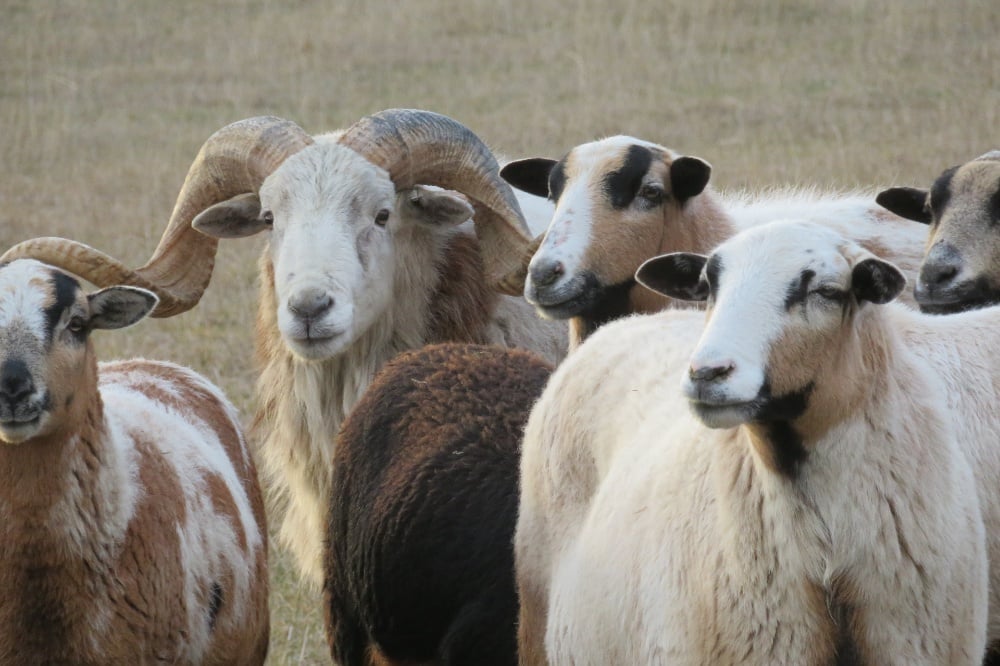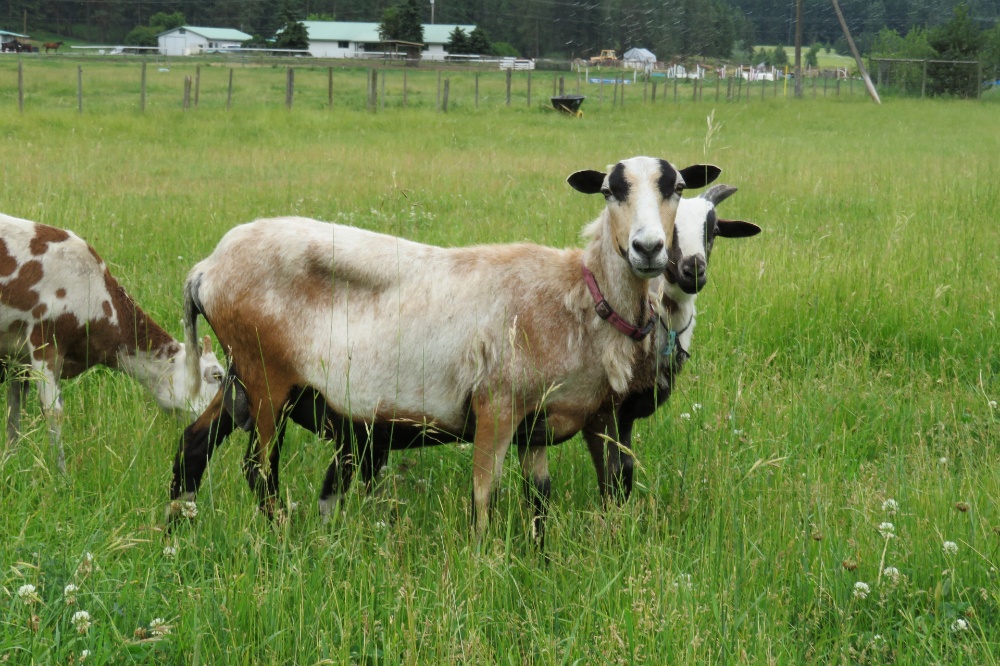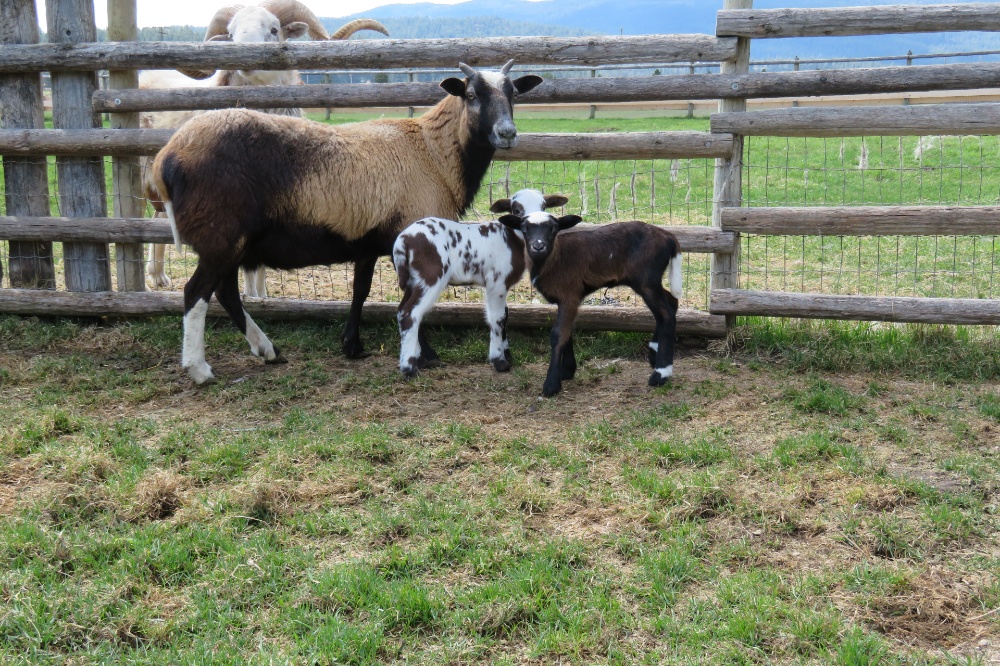We have sold our entire flock of Registered Painted Desert Sheep to Shady Acres Farm in Mannville Alberta. Please contact Shady Acres to inquire about their lambs for 2021, and current lambs available for breeding. It was an extremely difficult decision to sell our flock, but made much sweeter with this family who is really passionate about the breed.
click on the picture to go directly to their website
https://www.shadyacresfarm.net
,,
The first impression of an ideal Painted Desert Sheep is of an alert, regal and athletic animal of obvious Mouflon heritage. It is a nicely coloured sheep with a slick, smooth hair coat.
Mature rams should have large uniform horns with a full mane and bib; the nose is Roman shaped.
Producers aim for their rams to achieve Gold Star Ram (*GSR) status by the 2 year mark. *GSR is designated to the rams who have achieved Gold Star Ram status on the PDSS registry pedigrees.
Ewes are finer boned with a distinctly feminine face.
Painted Desert sheep are hair sheep with a double coat, and will fully shed their winter coats in the spring. There is no shearing, crutching, or docking of tails required. These sheep are well adapted to winter and summer climates.
Our livestock is primarily for breeding stock. We focus on large horns, good colour, and lovely temperament.
We will register only livestock that we are proud to put our farm name on.
Our herd is still in the development stage, and we are holding back the best ewe lambs for our breeding program going forward.
The meat of the Painted Desert Sheep is wonderfully delicate with a mild flavour raved about by our customers.
It is typically a lean meat with no mutton taste even with older animals.
Our hanging weights are typically around 50-60 pounds (in your freezer) at 7 months of age.
We love our Painted Desert Sheep, and will have no other breed.
Beautiful sheep cost the same to raise as plain wooly breeds, perhaps even less... I just want something really nice to look at.
The Painted Desert Sheep originated on Texas game ranches by crossing Mouflon Sheep with Rambouillet, Merino and Texas Blackbelly.
The coloured varieties of these sheep produced hybrid, spotted individuals, and were known as Parti-Dalls.
Hunters wishing to add these colorful sheep to their trophy rooms started to call them “Painted Desert” sheep.
The first impression of an ideal Painted Desert Sheep is of an alert, regal and athletic animal of obvious Mouflon heritage. It is a nicely coloured sheep with a slick, smooth hair coat.
Mature rams should have large uniform horns with a full mane and bib; the nose is Roman shaped.
Producers aim for their rams to achieve Gold Star Ram (*GSR) status by the 2 year mark. *GSR is designated to the rams who have achieved Gold Star Ram status on the PDSS registry pedigrees.
Ewes are finer boned with a distinctly feminine face.
Painted Desert sheep are hair sheep with a double coat, and will fully shed their winter coats in the spring. There is no shearing, crutching, or docking of tails required. These sheep are well adapted to winter and summer climates.
Painted Desert Sheep are a hardy breed, naturally resistant to many parasites, and are excellent browsers. They are great mothers, often raising triplets without concern.
Our livestock is primarily for breeding stock. We focus on large horns, good colour, and lovely temperament.
Any livestock not producing good horns and colour are either sold at a reduced rate, or are sold as locker lamb.
We will register only livestock that we are proud to put our farm name on.
Our herd is still in the development stage, and we are holding back the best ewe lambs for our breeding program going forward.
We are hoping to be able to produce consistent colour and horn genetics in our flock- but it is a work in progress.
The meat of the Painted Desert Sheep is wonderfully delicate with a mild flavour raved about by our customers.
It is typically a lean meat with no mutton taste even with older animals.
Our hanging weights are typically around 50-60 pounds (in your freezer) at 7 months of age.
Our Flock was certified Movi free in 2017. Mycoplasma ovipneumoniae is a serious threat to our wild Big Horn Sheep populations.
We love our Painted Desert Sheep, and will have no other breed.
Beautiful sheep cost the same to raise as plain wooly breeds, perhaps even less... I just want something really nice to look at.
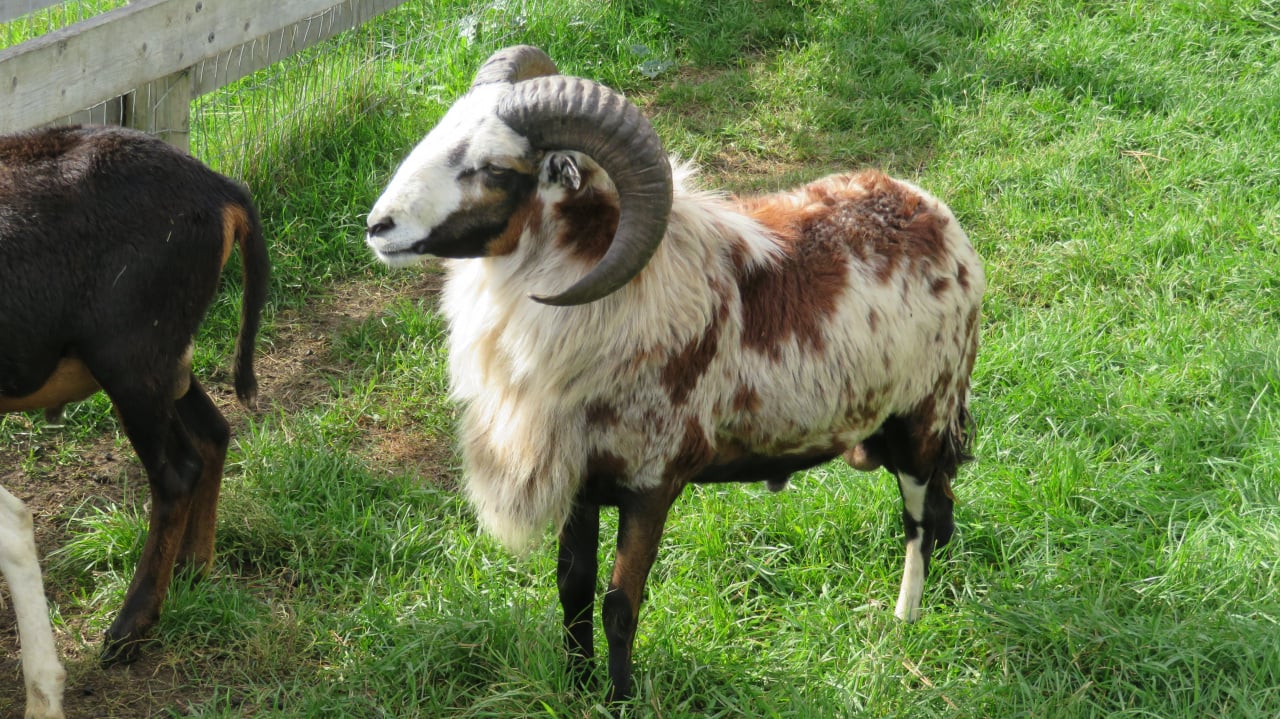
This is one of our current herd sires
Meet Big Rock Diablo.
Diablo is out of our doberman ewe Rhiatta, and by Circle C's Phin.
Diablo is pretty laid back - just like his poppa
I love this boys horns, all ribbed and perfectly straight.
We are excited to see what sorts of colours this fellow throws.
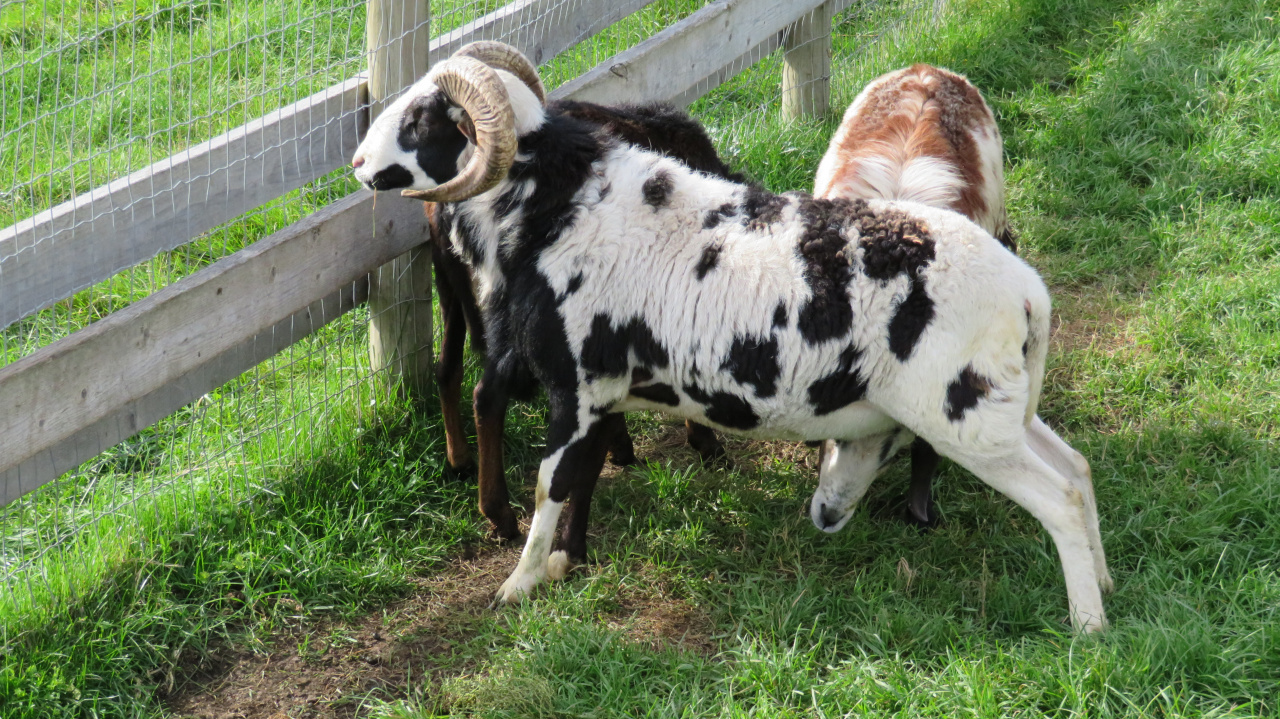
This is Big Rock Django.
He is also a herd sire that we are going to be using going forward.
We are really trying to get some good black and white in our herd.
Django is out of Big Rock Buffalo Gal and by Circle C's Stormin Kutenai.
I can see Kutenai's spunk in this fellow. He is not the easiest fellow on the barns!
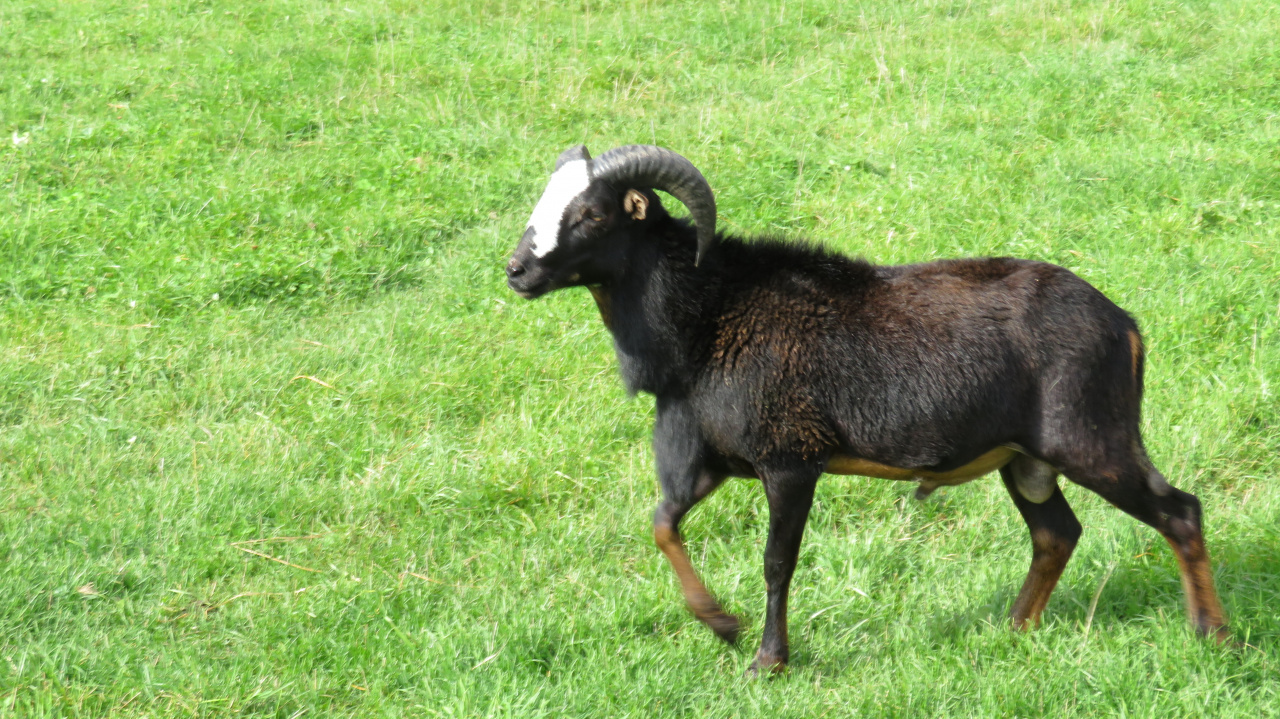
We finally have a doberman ram.
Meet Big Rock Kutenai's Cap.
The doberman colouring is very rare in Painted Desert sheep and we have been fortunate enough to have had 5 born on our farm. There are less than a dozen in the Painted Desert Sheep Society registry. This lovely lad will be used selectively this year. We are breeding him to our unrelated doberman ewe. It will be the first pairing of two dobermans ever!
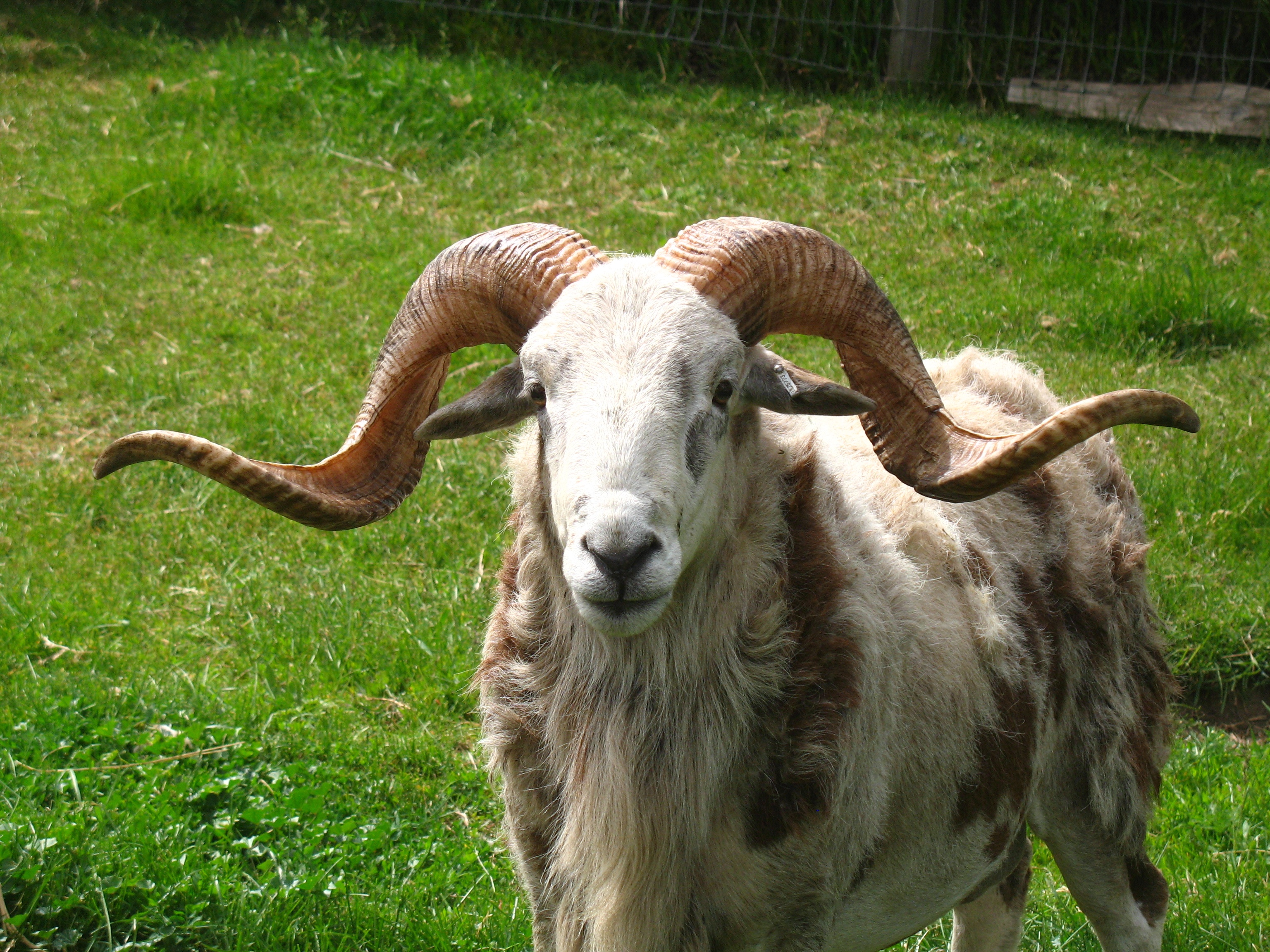
This was one of our herd sires, Circle C's Nuclear Phin; imported all the way from Texas.
Phin achieved his Gold Star Ram status at the age of 27 months. He has fathered many of our breeding ewes, and rams that we have chosen to take forward.
Big thank you to Mark Chaney.
PDDS F-3329 Born February 5, 2014
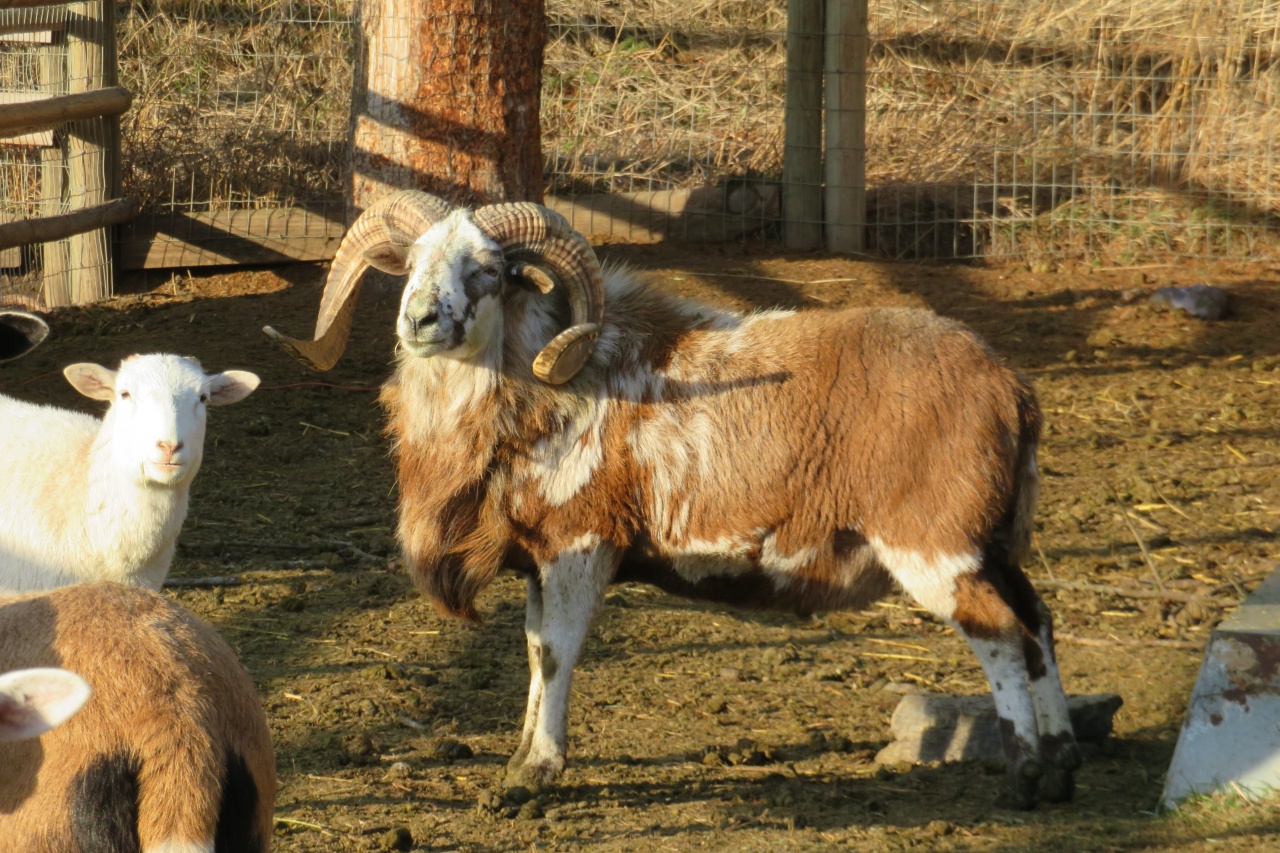
This was our youngest herd sire, Circle C's Stormin Kutenai, imported all the way from Texas.
Kutenai has attained Gold Star Status as of July 2018 with a total measurement of 98 4/8"; he has broken the tips off both horns. There are also a few of our breeding ewes and rams going forward that are from Kutenai.
PDSS F-3331 Born March 10, 2015
https://0901.nccdn.net/4_2/000/000/017/e75/e3d8db9bf7864c78b3bd320d4db0e770-1000x666.jpg
